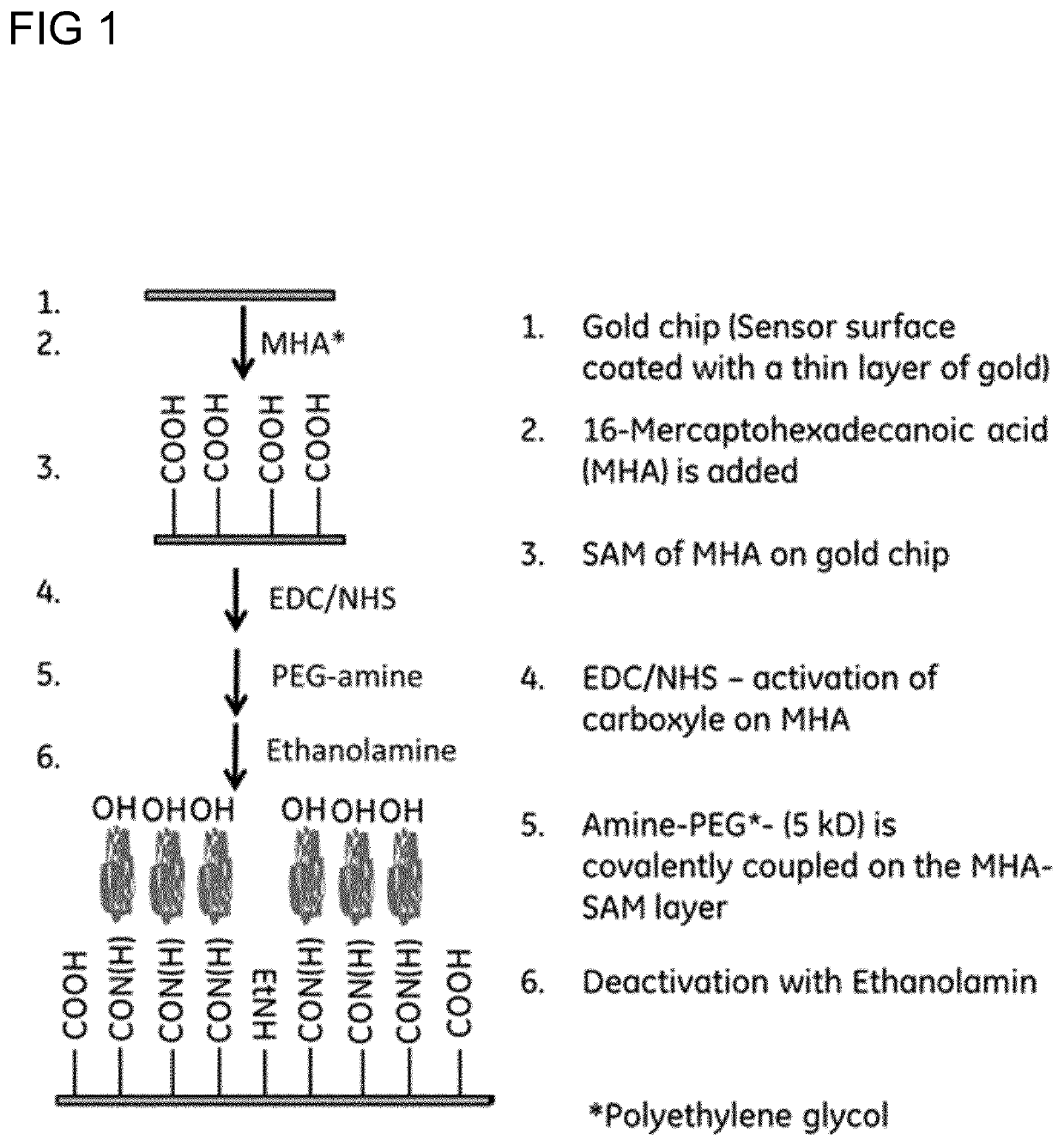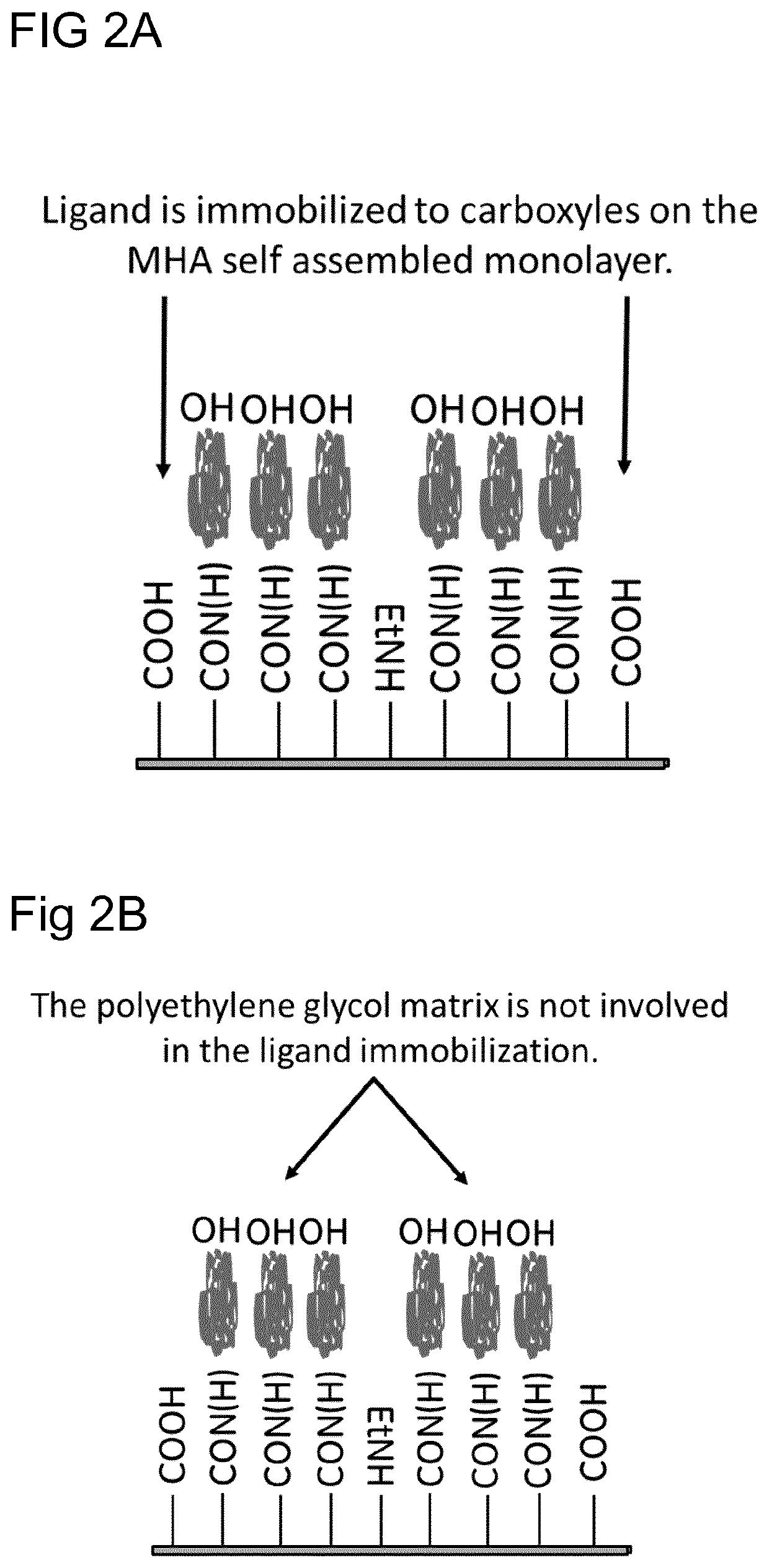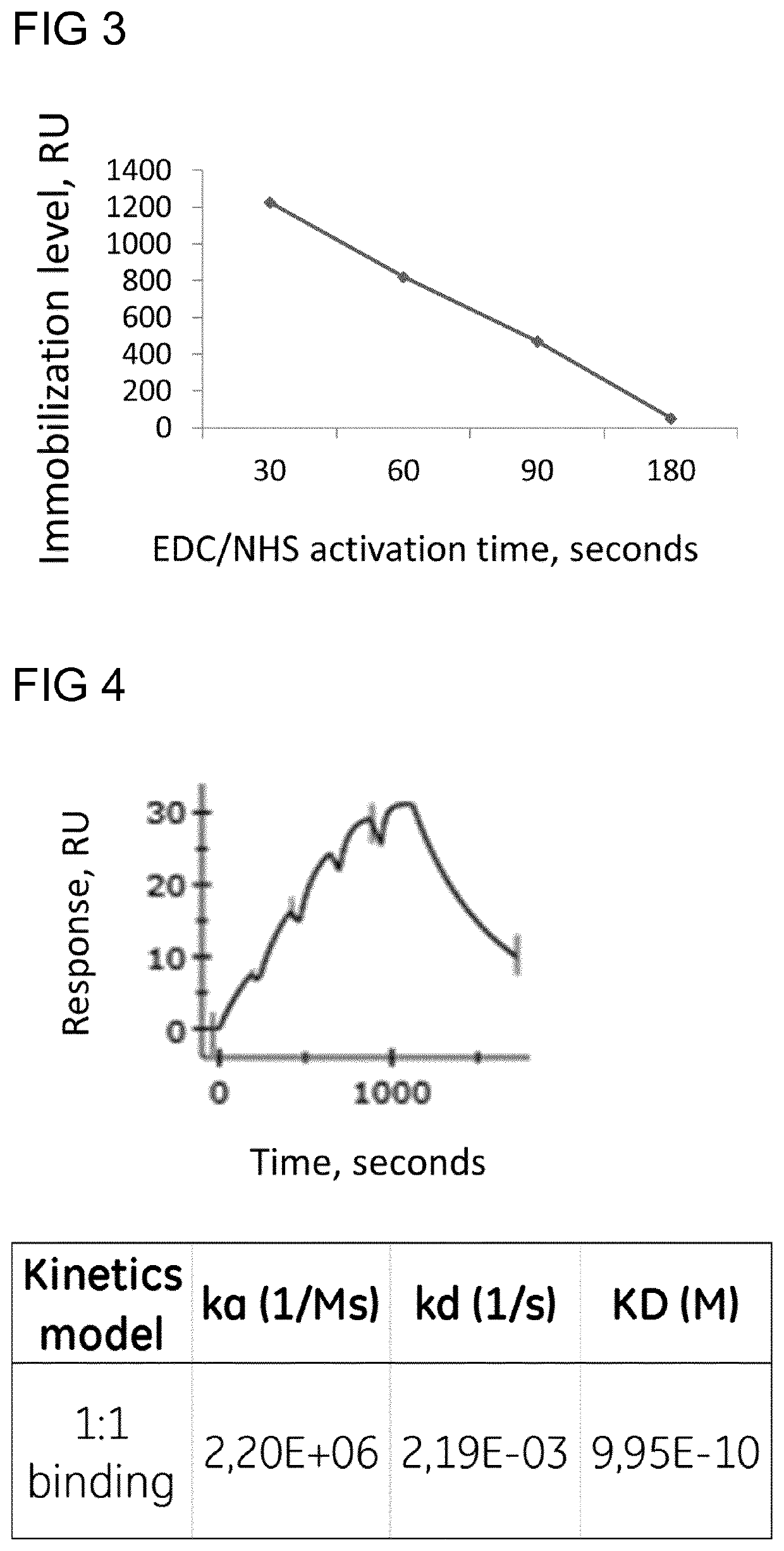Sensor Surface for Surface Plasmon Resonance Assays
- Summary
- Abstract
- Description
- Claims
- Application Information
AI Technical Summary
Benefits of technology
Problems solved by technology
Method used
Image
Examples
experiment 1
[0049] Synthesis of Sensor Surface with MHA SAM and PEG
[0050]For this Example reference is made to FIG. 1.
[0051]Substrates comprising glass chips with gold surface were immersed in 80% / 20% Ethanol / water with 1 mM MHA at 25° C. and incubated over-night. The gold chips were washed with following solutions for 5 minutes and in mentioned order; 100% Ethanol, 80% Ethanol, 50% Ethanol, 20% Ethanol and 100% water.
[0052]The sensor chips were dried with nitrogen gas and immersed 0.144 M EDC and 0.050 M NHS in water and incubated for 30 minutes at 25° C. The sensor chips were washed 4 times with water and thereafter immersed in 0.252 M sodium phosphate buffer pH 8.5 with 1.79 mM O-(2-aminoethyl) polyethylene glycol mw 5000 and incubated for 30 minutes at 25° C. The PEG solution was discarded and remaining active esters were deactivated with 1 M Ethanolamine pH 8.5. Finally the sensor chips were washed four times with water. The chips were dried with nitrogen gas.
experiment 2
[0053] Immobilization of Ligand (Antibody) to Carboxyl Groups on SAM MHA Using Different Activation Times
[0054]The chip from Experiment 1 was assembled with plastic carrier and hood. Thereafter, the chip was docked in Biacore 3000 according to the manufacturer's instruction in control software. The carboxyl groups on the SAM were activated in the instrument with a mixture of 200 mM EDC and 50 mM NHS in water for 30, 60, 90 and 180 seconds.
[0055]50 μg / ml Mouse IgG1 antibody in 10 mM sodium acetate pH 5 was injected over the activated chip surface for 7 minutes. The chip surface (not reacted succinimide esters) was deactivated with 1 M Ethanolamine pH 8.5 for 5 minutes. Immobilization with different activation times were performed in different flow cells. Running buffer HBS-EP (BR100188) (GE Healthcare).
[0056]For this Example reference is made to the graph in FIG. 3 which shows that the immobilization level is inversely proportional against the activation time after 30 seconds.
experiment 3
[0057] Assay Using Sensor Surface of the Invention
[0058]The chip from Experiment 1 was assembled with plastic carrier and hood. The chip was docked in a Biacore® 8K according to instruction in control software. The carboxyl groups on SAM were activated in the instrument with a mixture of 200 mM EDC and 50 mM NHS in water for 30 seconds.
[0059]30 μg / ml Mouse anti-β2μ in 10 mM sodium acetate pH 5 was injected over the activated chip surface for 7 minutes. The chip surface (not reacted succinimide esters) was deactivated with 1 M Ethanolamine pH 8.5 for 5 minutes. Different concentration of β2μ (1, 2, 4, 8, 16 nM) in running buffer were injected over the immobilized surface and a reference spot / surface without ligand. Running buffer was HBS-P+. β2μ binding kinetics to Mouse anti-β2μ was possible to determine. Fit to a one to one binding model was applied.
[0060]For this Example reference is made to FIG. 4 which shows the reference subtracted sensorgram. Through the Biacore® 8K evaluation...
PUM
 Login to View More
Login to View More Abstract
Description
Claims
Application Information
 Login to View More
Login to View More - R&D Engineer
- R&D Manager
- IP Professional
- Industry Leading Data Capabilities
- Powerful AI technology
- Patent DNA Extraction
Browse by: Latest US Patents, China's latest patents, Technical Efficacy Thesaurus, Application Domain, Technology Topic, Popular Technical Reports.
© 2024 PatSnap. All rights reserved.Legal|Privacy policy|Modern Slavery Act Transparency Statement|Sitemap|About US| Contact US: help@patsnap.com










